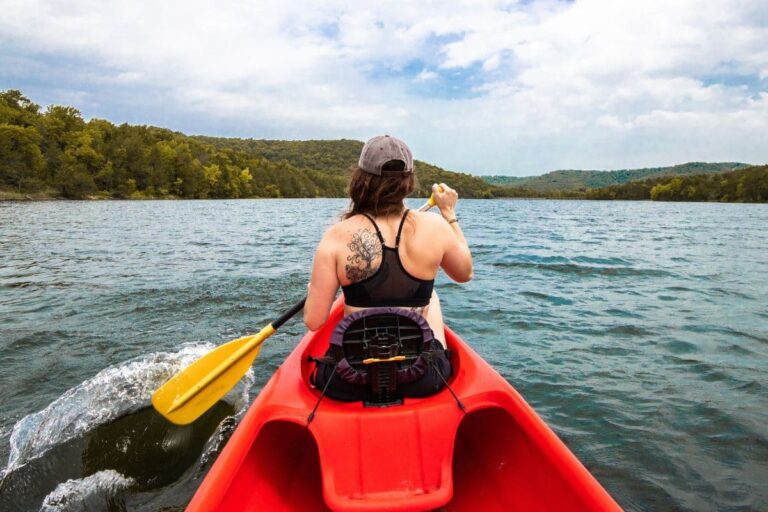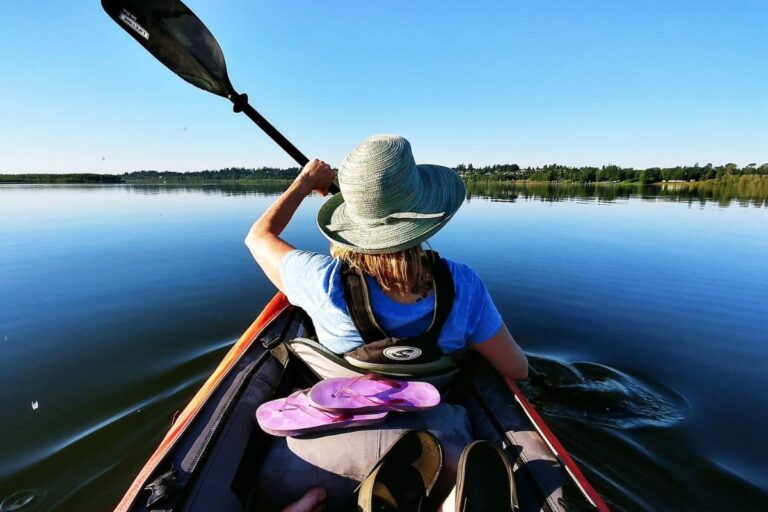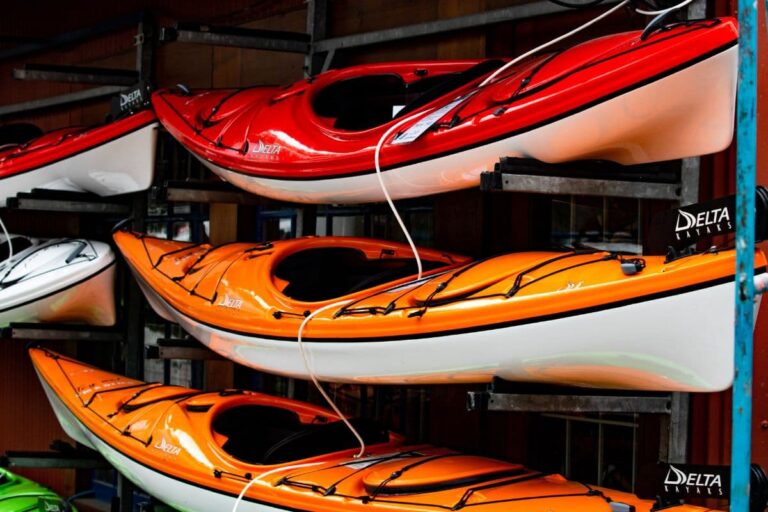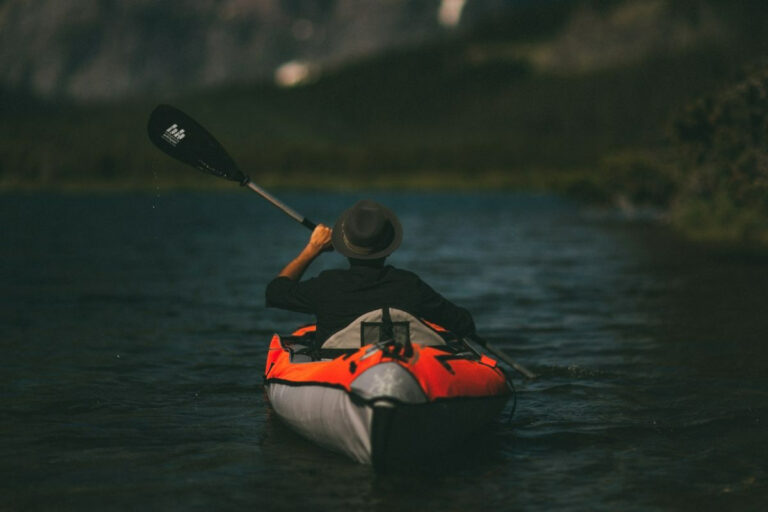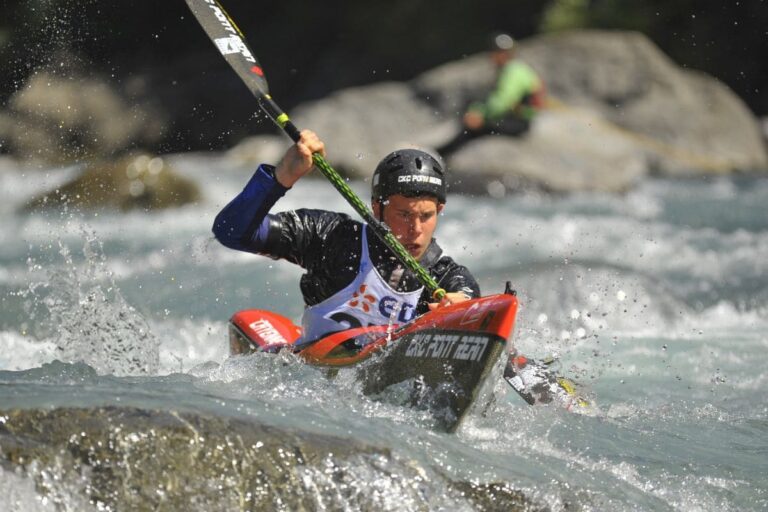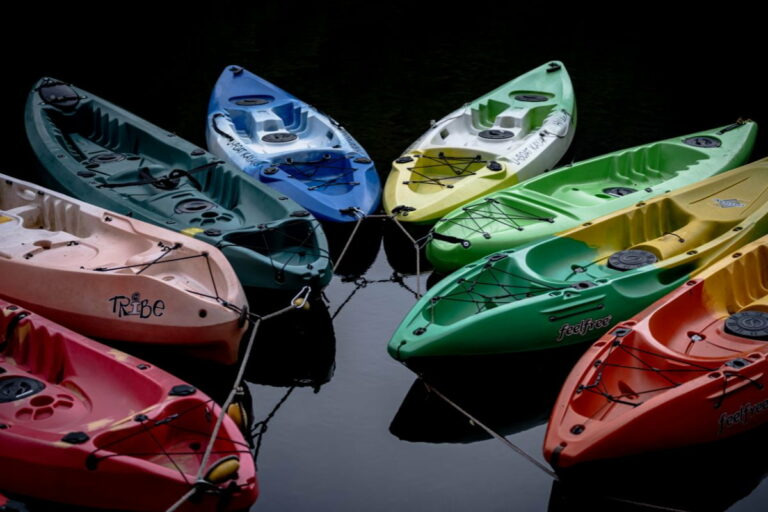How To Plan For A Long Distance Kayaking Trip? (in 8 Steps)
It’s 5:30 a.m., and the sun is already starting to rise.
You’ve been anticipating and preparing for your long-awaited kayaking trip, and you’re finally ready to venture out to the great outdoors.
You’ve done a lot of research, checked maps, and read several articles to get the most out of your recreational activity.
The only thing left to do now is to start your adventure and enjoy your kayaking excursion.
To plan your kayaking trip, first decide what type of kayaking you have in mind: sport, recreational, or sea kayaking. You’ll also need to choose the right type of kayak and paddle to use. Additionally, be sure to pack the necessary food and gear, follow all safety precautions, and factor in your physical abilities.
While this undertaking may seem overwhelming at first, it is actually fairly straightforward.
Whether you’re a beginner or a seasoned kayaker, planning your trip in advance is an essential component of a successful experience.
In this article, we’ll discuss all of the key aspects to consider to help ensure a smooth and exciting boating trip.
Why Should You Plan A Long-Distance Kayaking Trip?
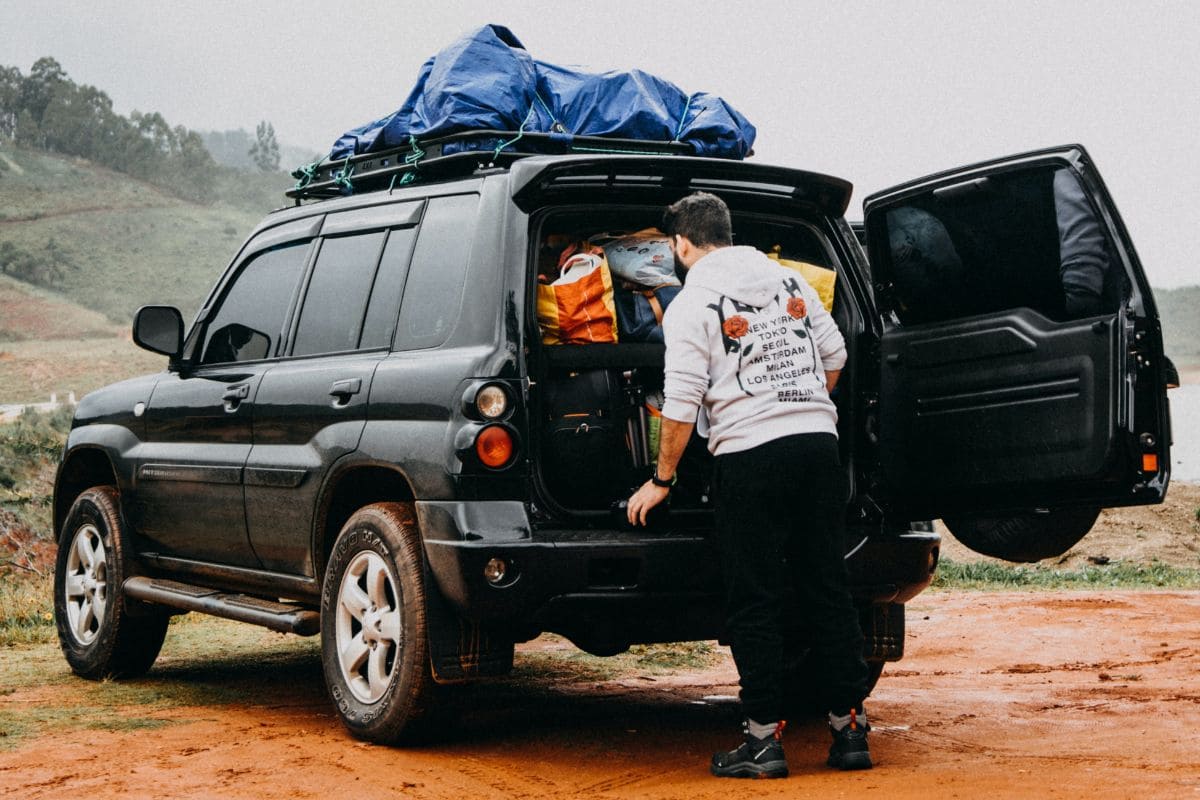
Kayaking can be a fun and thrilling recreational activity that allows you to paddle through beautiful waterways and arrive at your destination with the satisfaction of knowing you got there, solely based on your own effort and determination.
The kayak has a cockpit where paddlers sit with their legs extended beneath the closed deck.
This recreational activity is suitable for all ages, and allows you to explore nature as you navigate through incredible bodies of water.
Kayaking is also highly versatile, and can be paired with other various outdoor activities, such as fishing, hiking, and camping.
So, as you’re figuring out your route for a long-distance paddling adventure, consider including a suitable camping spot.
How To Plan A Long Distance Kayaking Trip
An extended kayaking trip can be enjoyable, but it can also pose some challenges in certain situations.
Here’s a step-by-step tutorial on how to plan a lengthy kayaking trip and so you get the most out of your adventure.
1. Get The Right Kayak
The most important aspect of planning a kayaking trip is choosing the right kayak for your needs.
Be sure to select a boat that is most suited to your travel style and kayaking needs.
Here’s a rundown of the various types of kayaks available for your paddling adventure:
Recreational Kayaks
For flat water paddling, recreational kayaks are the best choice. They work especially well for a longer kayak trip because they offer plenty of storage space for all of your gear.
Additionally, recreational kayaks provide a high level of stability, and are quite economical.
Touring Kayaks
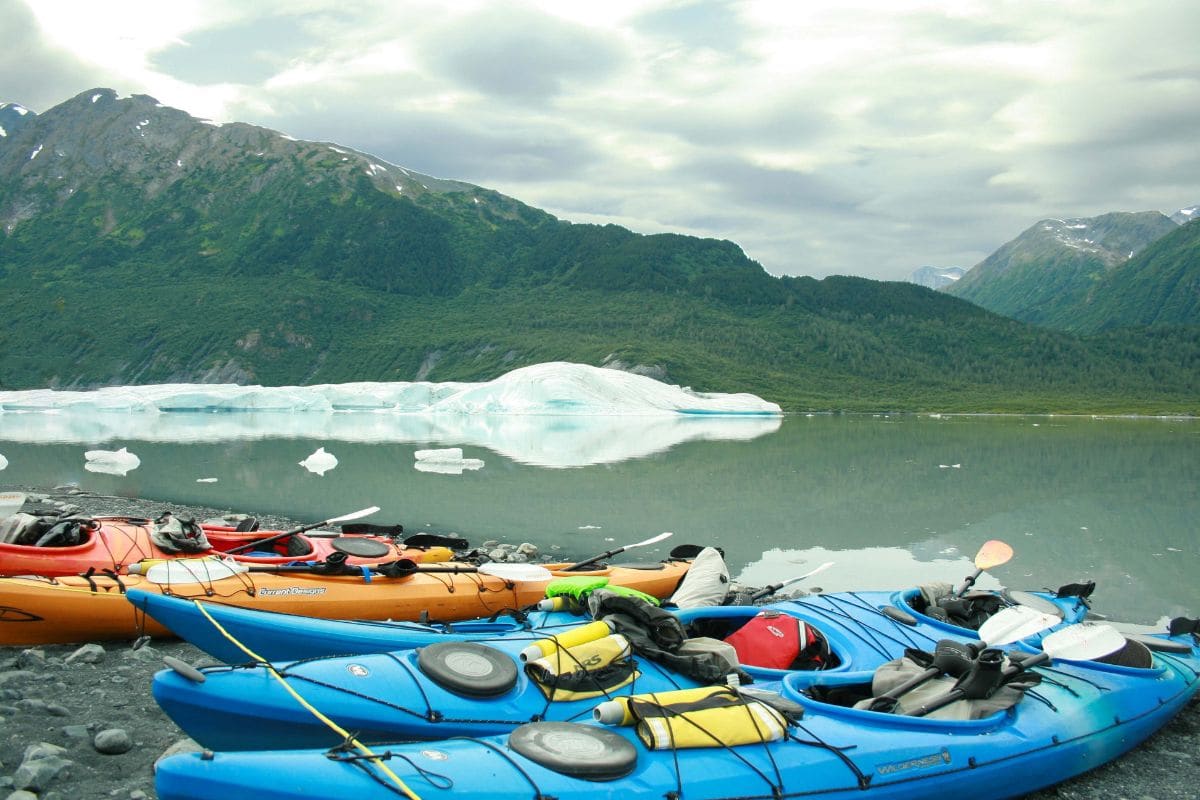
These boats can handle waves, and are more suitable for paddling in the sea or down a river, as well as long-distance adventures.
Touring kayaks will also have plenty of storage space, making them an ideal choice if you plan to bring camping gear on your kayak trip.
Whitewater Kayaks
Whitewater kayaks are quite simple to use, since they are usually small and can move quickly.
They do not, however, include any storage compartments.
The increased maneuverability of whitewater kayaks also means they’re less stable than other kayak types.
These factors make them better suited for individuals planning a one-day excursion as opposed to a long trip.
2. Choose A Paddle That’s Right For You
Whether you are an expert kayaker or a beginner, spending a lot of money on delicate and lightweight fiber paddles is unnecessary.
Instead, invest in a paddle that provides adequate stability and is budget-friendly.
Make sure the paddle you choose is the right length for both you and your boat.
For example, if you’re a tall person, you probably need a longer paddle to prevent your upper body from having to hunch over to reach the water.
Planning out your route and navigating miles of beautiful rivers calls for sufficient navigational abilities in order to ensure a smooth journey.
Navigation skills are essential for long-distance kayaking trips because many kayakers map their paths between rivers or other waterways ahead of time.
Furthermore, having some map and compass-reading abilities is beneficial in a variety of kayaking situations, including ensuring that you stick to your planned route.
Take careful note of the type of water you will be covering.
If you’re used to going out on calm water, don’t immediately jump to rough water for your first paddling trip.
If you will be traveling on the sea, it’s also important to consult a tide schedule before your trip.
4. Maintain Good Physical Fitness
If you are a beginner kayaker, paddling for several hours in a row may cause muscle soreness, and you are likely to become tired quickly.
Even those who are in good shape should start slowly by building up the distance they can cover during practice trips before attempting a longer paddle trip.
Some find it helpful to add time to their workout routine on the rowing machine in order to build their arm and shoulder strength.
5. Bring Only What You Need
Taking lightweight gear with you on a kayaking trip is really important.
Those who plan to both camp and kayak will need a lightweight tent, sleeping bag, food, water, and cooking utensils, at the very least.
Keep everything dry by using high-quality waterproof bags to prevent your gear from becoming drenched, especially in case you tip over or face unexpected rain.
A dry bag can be the only thing that stands between you and a cold, wet, miserable experience.
While you should keep your gear to a minimum, it’s also important to remember that paddling trips hardly ever go exactly according to plan.
For example, you may encounter unexpected weather changes, equipment malfunctions, and so forth.
It’s wise to bring some easily accessible rain gear, just in case the weather changes unexpectedly.
A few extra layers are also important if you’re kayaking during colder times of the year.
6. Bring Delicious Food
Packing your favorite snacks or drinks can make your trip much more fun!
However, every experienced paddler knows that including enough fresh fruits, vegetables, and protein in your diet is also important, because these foods are much more filling and beneficial than junk food.
And because you’ll be paddling for a long time, it’s wise to choose calorie-rich snacks to help you maintain your energy levels.
Foods like Lean meat and cheese sandwiches, nuts, whole grain crackers, and hard-boiled eggs will keep you energized.
You can even bring along fishing equipment to add fresh fish to your menu for the trip, as many lakes and rivers offer a variety of fishing opportunities.
7. Keep Yourself Hydrated
It’s essential to drink plenty of water in order to stay hydrated both before and during your trip out on the water.
Always ensure that you have a sufficient supply of water with you.
If you don’t want to have to carry a lot of heavy water, consider purchasing a compact water filter that will make the water where you’re kayaking safe to drink.
Note that this only works if you’ll be kayaking on freshwater, like a river or lake, not saltwater.
8. Safety Gear
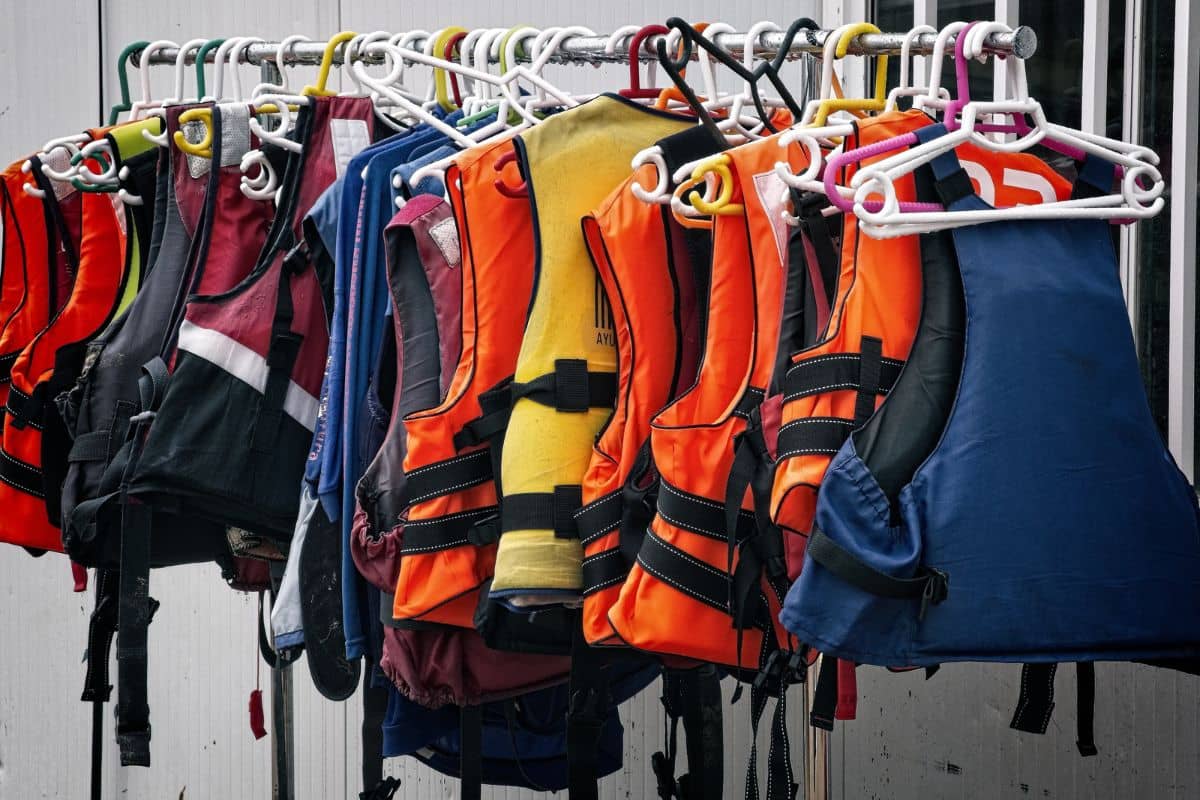
Always make sure you have the necessary safety equipment before you paddle away. Here’s a list of some essential kayaking safety equipment to bring along on your trip:
- Personal floatation device, generally known as a PFD
- First Aid kit
- Flashlight
- Map and compass
- Ropes
- Sunscreen with high SPF
- Mobile phone
- Sunglasses
Different Types Of Kayaking
There are a few different types of kayaking that people enjoy.
When preparing for a long-distance kayaking trip, you can choose from these options and plan accordingly.
1. Sport
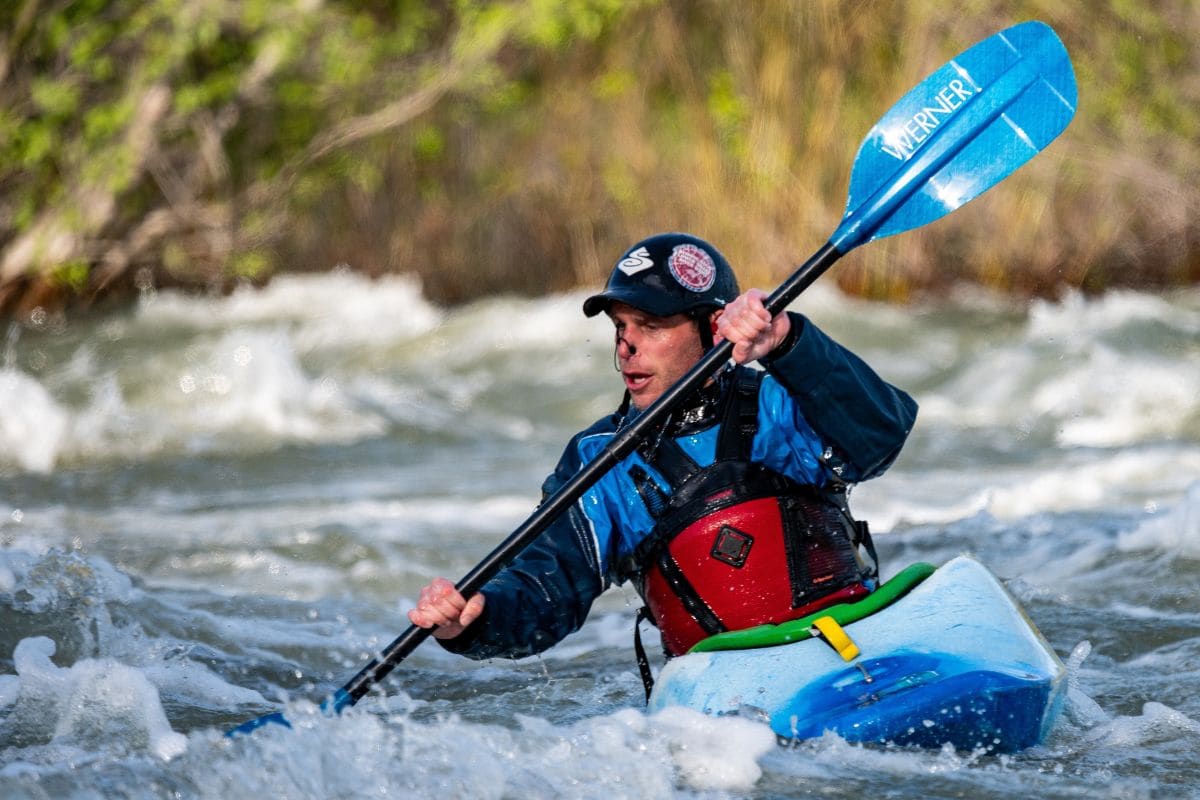
Sport kayaking is the most effective way for athletic types to improve their skills.
Whitewater courses and river races can add a competitive edge that isn’t found with other types of kayaking.
If you enjoy sports, choosing sport kayaking and participating in competitions will provide you with a lot of fun and excitement.
However, keep in mind that most race courses are usually relatively short and don’t involve multi-day trips.
2. Recreational
Recreational kayaking is the simplest, and perhaps the easiest, way of exploring freshwater.
It allows paddlers to take a break and absorb the natural splendor of nature and the water around them.
3. Sea
Kayaking in the sea calls for a high level of concentration and navigational abilities.
This type of kayaking requires the use of sea kayaks and other special equipment that is made for more intense kayaking, and should only be attempted by experienced kayakers who have extensive experience paddling in rough conditions.
Helpful Tips For Long Distance Kayaking
If you’re a beginner, here are some steps to follow before heading towards your destination:
- Small lakes or ponds, which are usually quiet and easy to access, are ideal places to start kayaking.
- While you’re becoming more comfortable with kayaking, it’s best to avoid areas where the water levels tend to change quickly.
- If you’re the only kayaker on the water, paddle close to the shore so that you’ll be visible to those on shore, in case you run into trouble and need their assistance.
- Wear your safety gear at all times.
- Be honest with yourself about your abilities, and only paddle in areas that you can navigate easily.
- Never attempt to kayak in bad or stormy weather – always check the weather forecast before venturing out on any kayaking trip.
- Do not experiment with any form of drugs or other substances while on the water.
- To get the most out of this fun and enjoyable activity, we recommend kayaking with a friend, family member, or even a group.
How Many miles are considered a long kayaking trip?
What constitutes a “long” trip varies from person to person.
For example, some consider four miles a long distance, while going as far as 20 miles may not be too much for others.
If you’re paddling downstream on a river, you’ll find it much easier to travel for longer distances than attempting to go upstream.
A fast-moving river will also move you along more quickly than a slow river or a flat lake.
How much time does a typical kayaking trip take?
On average, one mile of paddling takes 20-30 minutes for the average kayaker.
Several other factors should also be considered, such as your level of experience, the weather and water conditions, and the type of kayak you have.
What is most important NOT to do while kayaking?
Kayakers should always avoid offshore winds, since they’ll make your journey extremely challenging, and you may find it difficult to go back to shore.
Also, be sure to always adhere to boating regulations, and never overload your kayak.
Furthermore, don’t head out on the water without double-checking your equipment!
Conclusion
Does planning for a long-distance kayaking trip sound a little easier now?
Just follow the steps described above to start your thrilling kayaking adventure!
Table of Contents

